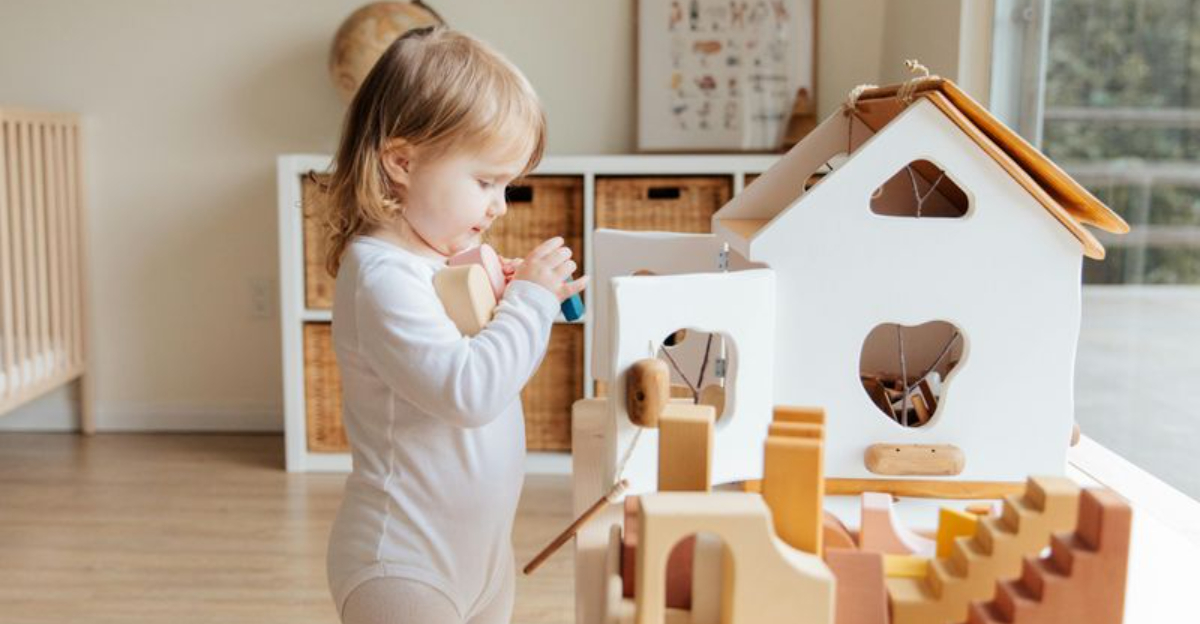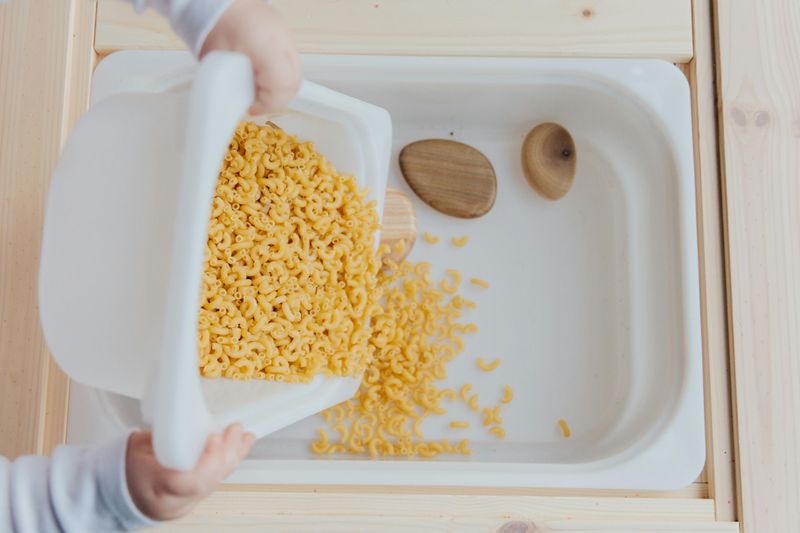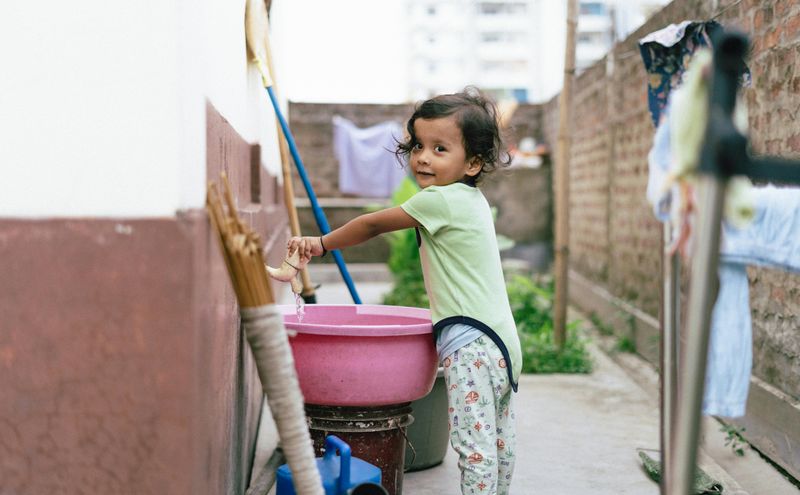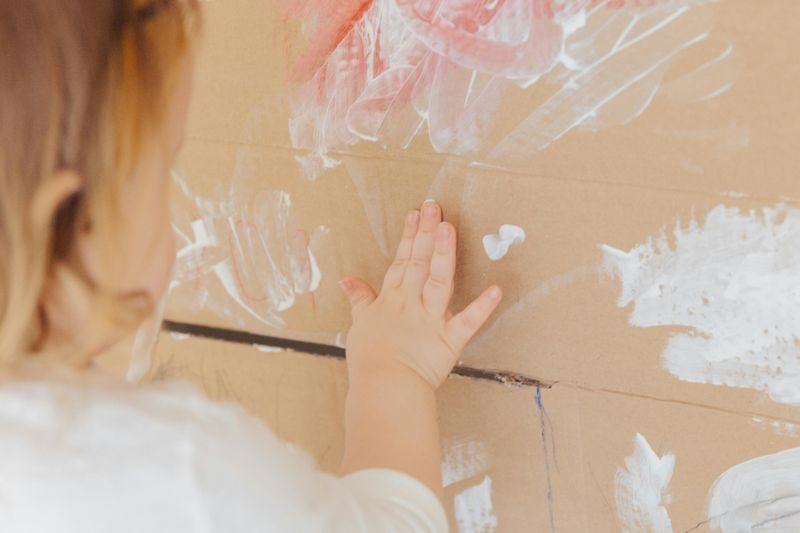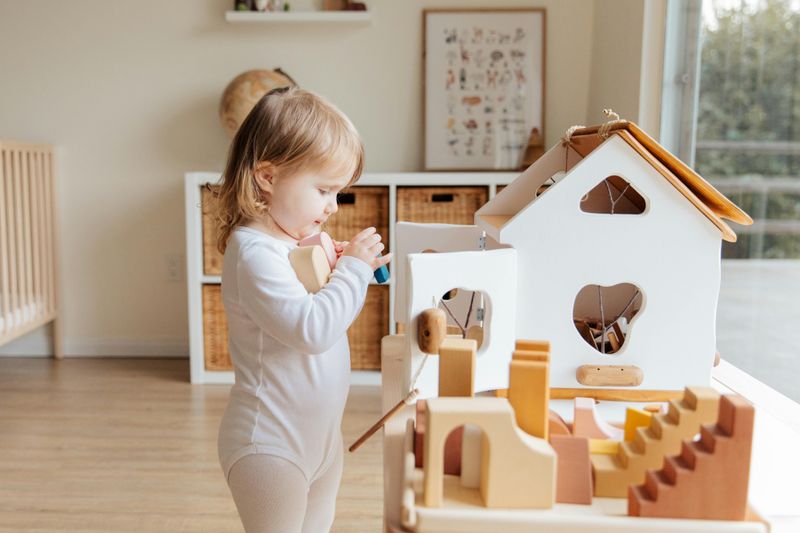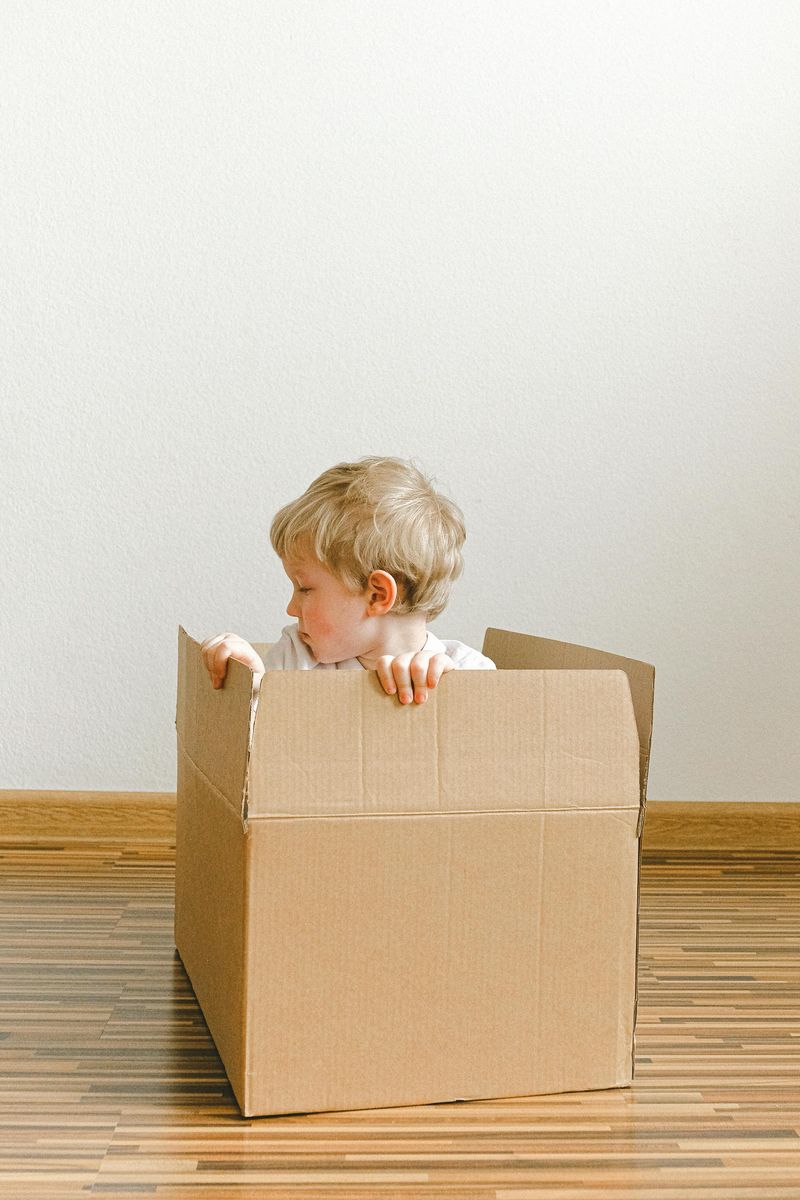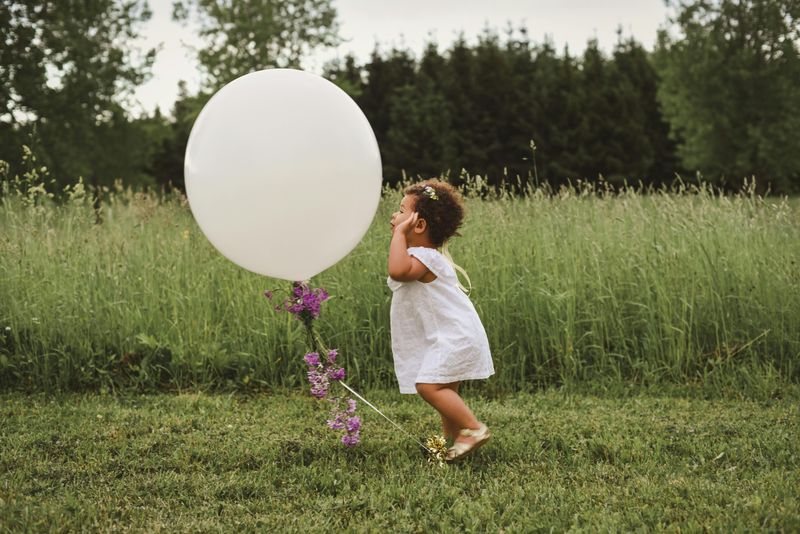Parents know the struggle of keeping toddlers entertained without resorting to screens. Between boundless energy and short attention spans, finding engaging activities can feel like a full-time job. These 12 screen-free activities have been tested by real parents and actually hold toddlers’ interest. Best of all, they use items you likely already have at home!
1. Indoor Obstacle Course
Transform your living room into an adventure zone with cushions, pillows, and blankets arranged as tunnels, mountains, and bridges. Toddlers love conquering these homemade challenges!
Show them how to crawl under a chair, step over a pillow line, or balance along a tape path on the floor. The physical movement helps burn energy while building gross motor skills and spatial awareness. Change the course layout regularly to maintain interest.
For extra fun, pretend the floor is lava or that you’re exploring a jungle together.
2. Sensory Bins
Grab a plastic container and fill it with rice, dried beans, or pasta. Add measuring cups, funnels, and spoons for hours of pouring, scooping, and transferring fun. The different textures fascinate little fingers while teaching cause and effect.
Hide small toys inside for an exciting treasure hunt element. Seasonal themes work wonderfully – try colored rice with plastic eggs for spring or pine cones with artificial snow for winter. Always supervise closely, especially with smaller items.
A sheet underneath catches spills and makes cleanup much easier.
3. Sticker Play
Stickers are magical attention-grabbers for toddlers. The simple act of peeling and placing develops fine motor skills and concentration.
Provide large sheets of paper, old cardboard boxes, or even paper plates as canvases. Animal or character stickers can inspire storytelling. Ask your little one about the creatures they’re placing – where do they live? What are their names? For more structure, draw simple shapes they can fill with stickers or create a basic road map they can decorate with vehicle stickers.
Dollar stores offer affordable sticker sheets in countless themes.
4. Water Play Station
Fill the kitchen sink or a plastic tub with a few inches of water and watch your toddler become completely absorbed. Plastic cups, measuring spoons, funnels, and sponges transform this simple setup into a scientific laboratory. Add a drop of food coloring or child-safe soap for bubbles and extra excitement.
Floating and sinking experiments happen naturally as your child explores which objects stay on top and which disappear below. This activity works wonders before bath time when a little splashing won’t matter.
5. Nature Treasure Hunt
Step outside with a small basket or bag and encourage your toddler to collect natural treasures. Even a walk around the block becomes magical when you’re searching for special rocks, interesting sticks, or colorful leaves.
Name the items as they find them to build vocabulary. “Look at this smooth rock! Can you find another one?” Simple descriptions introduce concepts like texture, size, and color.
Back home, create art with the findings or sort them into categories. This activity connects children with nature while developing observation skills and an appreciation for the outdoors.
6. Playdough Creations
Squishing, rolling, and molding playdough provides sensory stimulation while strengthening hand muscles needed later for writing. Store-bought versions work great, but homemade playdough lets you control ingredients and customize colors.
Cookie cutters, plastic knives, and rolling pins extend the play. Craft sticks, buttons, and pipe cleaners can be pressed in for decoration. Try creating pretend food – toddlers love making “cookies” or “pizza” they can serve to stuffed animals.
Keep playdough fresh in airtight containers. A plastic tablecloth underneath contains the mess and makes cleanup quick and easy.
7. Dance Party
Crank up some upbeat tunes and watch your toddler’s natural rhythm emerge! Dancing releases energy, improves coordination, and creates joyful family moments. No special equipment needed – just clear some space and let the wiggles begin.
Add scarves or ribbons for waving, or incorporate simple instruments like maracas or tambourines. Songs with instructions like “Freeze Dance” or “Head, Shoulders, Knees and Toes” add structure for toddlers still learning how their bodies move.
Even just 10-15 minutes of dancing can transform a cranky mood or fill that tricky before-dinner time slot.
8. DIY Art Projects
Young children experience pure joy through artistic expression. Washable markers, chunky crayons, and finger paints paired with large paper create the perfect creative outlet. The focus is on exploration, not finished products.
Masking tape on paper creates boundaries for paint or markers, making instant designs when removed. Stamps made from potato halves or cork tops introduce printing concepts. Even scribbling develops pre-writing skills and hand-eye coordination.
Remember to dress for mess and embrace the creative process. Asking “Tell me about your picture” rather than guessing what it is shows respect for their artistic intentions.
9. Building with Blocks
Wooden blocks, plastic connecting bricks, or even cardboard boxes – building materials inspire endless creativity while teaching spatial relationships and problem-solving. Watch how focused your toddler becomes when stacking and creating!
Start by building together, demonstrating simple structures they can copy. Narrate what’s happening: “You’re making your tower so tall!” or “What happens if we put this block here?” This builds vocabulary and mathematical thinking.
Extend block play by adding toy animals, vehicles, or people. Suddenly blocks become zoos, garages, or castles in imaginative play scenarios that can last surprisingly long.
10. Pretend Play Stations
A cardboard box becomes a rocket ship. A blanket over chairs transforms into a secret fort. Toddlers naturally gravitate toward imaginative play that helps them make sense of their world while developing language and social skills.
Set up simple stations with props – stuffed animals for a veterinary clinic, empty food containers for a grocery store, or dress-up clothes for a variety of roles. These don’t need to be elaborate or expensive.
Join in occasionally, following their lead rather than directing the play. Your participation validates their ideas while providing vocabulary and gentle modeling of social interactions.
11. Baking Helper
Little hands love being useful in the kitchen! Simple recipes with minimal ingredients offer perfect opportunities for toddlers to participate. The sensory experience of measuring, pouring, and mixing captivates their attention.
Muffins, cookies, or no-bake treats work well for novice helpers. Give them specific jobs like stirring a bowl of dry ingredients, adding pre-measured items, or decorating with sprinkles. The pride in creating something the family enjoys builds confidence.
Expect messes and plan accordingly. A dedicated child-sized apron and standing on a secure step stool make them feel like a real baker while keeping them safely involved.
12. Balloon Games
Balloons move slowly enough for toddlers to track and catch, making them perfect for developing hand-eye coordination. The challenge of keeping a balloon from touching the ground creates instant engagement and giggles.
For younger toddlers, simply batting at a balloon tied to a string provides entertainment. Older ones enjoy the cooperative game of keeping it aloft together. Try using pool noodles as balloon bats for an added challenge.
Always supervise balloon play closely and discard any popped pieces immediately. Mylar balloons offer a safer alternative for households with balloon-popping concerns.
